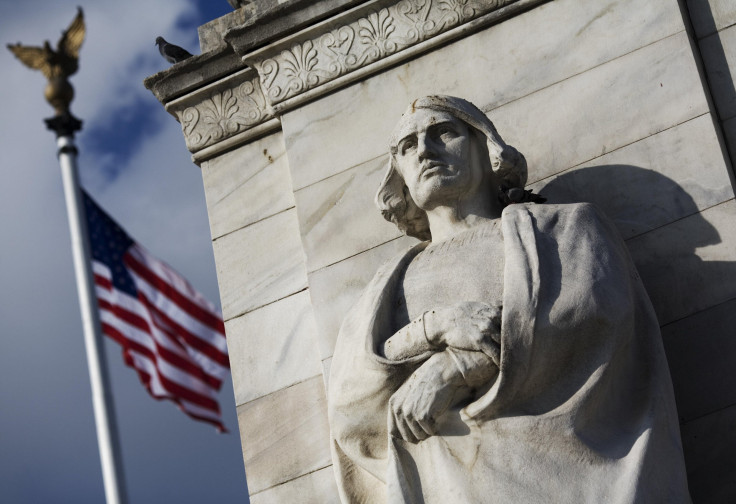Columbus Day Facts 2018: 9 Lesser-Known Things About Controversial Explorer

The second Monday of October marks the Columbus Day, which commemorates European explorer Christopher Columbus' discovery of the New World.
“In 1492, Christopher Columbus and his mighty three-ship fleet, the Niña, Pinta, and Santa Maria, first spotted the Americas. His historic achievement ushered in an Age of Discovery that expanded our knowledge of the world,” the White House said in a statement, Saturday.
“Columbus’s daring journey marked the beginning of centuries of transatlantic exploration that transformed the Western Hemisphere. On Columbus Day, we commemorate the achievements of this skilled Italian explorer and recognize his courage, will power, and ambition — all values we cherish as Americans,” the statement added.
Here are a few facts you might not know about Columbus:
1. Christopher Columbus was not his real name, but an anglicized version of it, which was actually Cristoforo Colombo. He is also called by an array of different names in other cultures. He is Cristóbal Colón in Spanish and Kristoffer Kolumbus in Swedish.
2. Christopher Columbus was born in 1451 in Genoa, Italy. He began sailing when he was only 15 years old.
3. Contrary to popular belief, the mission of Columbus’ famous 1492 was not to prove the Earth was round but instead to find an alternate route to Asia by sailing West and return back to Spain loaded with spices and other valuable goods. In order to finance his voyage, he pleaded to a number of European monarchs, including the King of Portugal. Spanish King Ferdinand and Queen Isabella were advised by their royal counsel to ignore Columbus’ impractical ambitions. His voyage was finally approved in 1492, Thought Co. reported.
4. While it was initially believed he was given three ships by the city of Palos named Nina, the Pinta, and the Santa Maria, according to History, the first two were mostly likely not the official names of Columbus’ ships. It is believed mariners dubbed one of his ships “Pinta” which in Spanish means “the painted one” or “prostitute.” Meanwhile, Nina was a nickname that was given to the ship originally named Santa Clara, in honor of its owner Juan Nino.
5. Columbus was likely not the first European to travel across the Atlantic to the U.S. mainland. That distinction has been assigned to men like Norse Viking Leif Eriksson, who is believed to have landed in present-day Newfoundland almost five centuries before Columbus set sail, and others like Ireland’s Saint Brendan or a number of Celtic people.
6. Columbus made three more voyages to the Americas after his famous one in 1492. His voyages took him to the Caribbean islands, South America and Central America.
7. When the ambitious explorer discovered Newfoundland, he left behind 40 men to begin the process of colonizing the land he had discovered. The colonization process included making slaves out of natives who resided in the New World. In addition, the Europeans murdered 70 million to 100 million indigenous people, according to genocide expert David Stannard.
8. After discovering the natives of his newly discovered land could be valuable as slaves, he brought back several of them to Spain in the first and second voyage but was disappointed when the queen decided the New World natives were her subjects.
9. Although Columbus Day has been observed as a national holiday since the 1930s, with half of states in the U.S. giving their employees a paid leave from work on the day, in the recent years, cities like San Francisco and Cincinnati, Phoenix, Seattle, Denver, Albuquerque, Portland Los Angeles City have decided to replace Columbus Day with Indigenous Peoples' Day due to the cruelty and inhumane treatment native Americans had to endure at the hands of Columbus’ men.
© Copyright IBTimes 2024. All rights reserved.






















